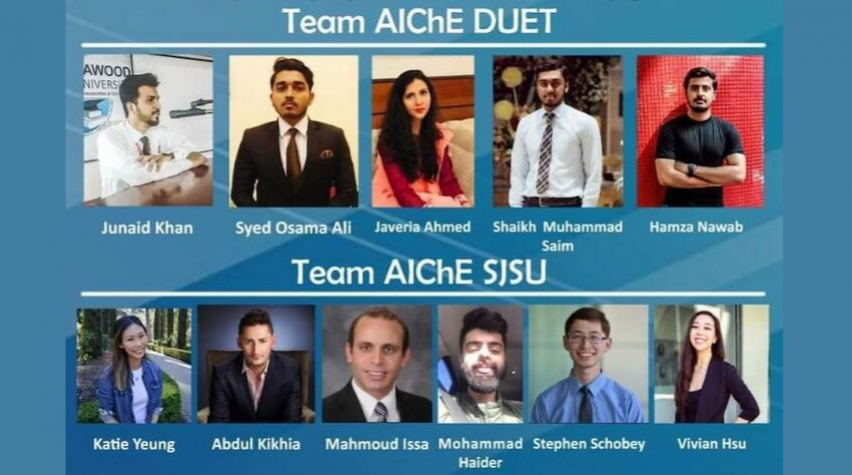
AIChE Chemical Engineering for Good Challenge, also known as ACE4G, is a competition to encourage chemical engineering students and their partners to consider how chemical engineering know-how can be applied in an appropriate way on a small scale to improve the quality of life for communities in the developing world.
San Jose State University and Dawood University collaborated and won second place in last year's competition with their submission "Flow-electrode Capacitive Deionization of Salt Water Using Cactus." They also won the bonus prize for the best entry by a collaboration of a US and international Student Chapter.
We caught up with Dawood University's student chapter founder and former president, Javeria Ahmed, to learn more about their competition idea, what inspired them to enter the competition, and what they learned in the process.
How did you come up with the idea for your competition submission, "Flow-electrode Capacitive Deionization of Salt Water Using Cactus"?
We initially went with the idea of using graphene-coated sand for our water purification process but weren't able to purify the amount of water that was needed. Then, we decided to use the flow electrode capacitive deionization method that predicted higher purity results and low power usage. We used cactus as our ion exchange membrane because of the availability and feasibility of cactus in that region. The ion exchange membrane was the most expensive part of the system and we drew inspiration from the nature of plants to potentially allow for ion transfer.
Do you think that the technology you recommended could be implemented on a larger scale?
Yes, there is a water purifying plant in China that uses a similar method of desalination called capacitive deionization with solid electrodes. This water plant is scaled to 10000 m3/d with a 75% salt removal rate and an energy consumption rate of 1.03 kWh/m3 . We also believe that there is some potential to be found in utilizing natural sources for ion exchange membranes, such as potentially a packed bed of plant material.
What inspired you to enter this competition?
We entered the competition because we wanted to work on a chemical engineering project that would help us develop more innovative mindsets as well as better the living conditions of the people living in developing countries. We also wanted to work closely with our sister chapter to learn from each other when collaborating on a project of this scale.
What were some of the highlights of working on this competition with your team members? Did you learn anything new in this process?
The highlights for us were running lab tests, late nights, brainstorming ideas with our sister chapter and receiving positive test results. There were several initial ideas we tried but that failed, so we persevered and pushed forward with new ideas. In fact, the cactus idea was conceived the week before the submission date and tested in the lab the same week that the report was due.
2019 ACE4G Challenge
Registration for the 2019 ACE4G Challenge is now open. AIChE student chapters are strongly encouraged to partner with organizations, such as Engineers Without Borders, with experience applying appropriate technology on micro-scale projects in small, technically unsophisticated communities.


